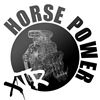Take a look Why NHRA Banned Turbos from Drag Racing – The Real Reason Behind the Controversial Decision!
A Rule Change That Shocked the Drag Racing World
For years, racers and fans dreamed of seeing full-tilt turbocharged monsters running in NHRA’s top categories. Turbos were already proving themselves in other forms of motorsport — from half-mile roll racing to street-legal no-prep events — delivering brutal torque curves and unmatched top-end power.
But when teams finally began exploring turbocharged combinations in NHRA professional classes, the response from the sanctioning body was swift and decisive:
NHRA imposed heavy restrictions — effectively banning turbos from the top categories.
This raised one big question across the racing world:
Why?
1. Turbos Produced “Too Much Power” Too Quickly
Turbos weren’t just competitive — they were dominating in early testing. With modern boost-control technology, CO2 regulators, traction-management strategies, and advanced fuel systems, turbo cars were on track to shatter:
-
ET records
-
MPH records
-
Engine longevity expectations
-
Safety thresholds at the top end
A properly tuned twin-turbo Hemi could deliver more overall horsepower than a blower or nitro motor while being lighter and more consistent.
NHRA saw the writing on the wall:
If turbos were allowed, every team would eventually switch.
That meant:
❌ The cost of entry would skyrocket
❌ Decades of blower-and-nitro development would be sidelined
❌ The established ecosystem would collapse
2. Too Dangerous for Existing Track Lengths & Shutdown Zones
Turbo cars make absurd top-end power. Unlike blower cars — which peak earlier — turbos keep pulling harder the longer the run goes.
NHRA’s own safety committees concluded:
Turbo cars would reach speeds beyond what existing shutdown areas and sand traps were designed to handle.
Even blower cars sometimes struggle to stop after a 330+ mph pass. Turbos threatened to push top speeds into unsafe territory.
At 1,000 feet — and especially at the old 1/4-mile — turbos posed a shutdown safety risk NHRA wasn’t prepared to redesign tracks for.
3. Rule-Balancing Would Be Impossible
Trying to equalize three fundamentally different engine systems is nearly impossible:
-
Nitro-burning supercharged engines
-
ProCharger/F-series centrifugal blower combos
-
Twin-turbo Hemi setups
Unlike blowers or nitro cars, turbo power is infinitely tunable with:
-
wastegate duty cycles
-
boost-by-gear
-
boost-by-time
-
traction strategies
-
timing-based torque shaping
-
ECU control curves
NHRA realized:
You can’t meaningfully restrict something controlled by software.
Blower belts, rotors, and nitro pumps have physical limits. Turbos? You can add 10 psi with a laptop click.
Balancing them would be a never-ending nightmare.
4. Protecting the Identity of NHRA’s Top Classes
Top Fuel and Funny Car have clear identities:
-
Nitro flames
-
Belt-driven superchargers
-
Massive fuel pumps
-
Explosive 11,000+ horsepower runs
Turbo cars would dilute the product.
NHRA markets the sport around noise, flame, and violence — all of which turbos reduce through muffling and more controlled power delivery.
A field of quiet turbo cars?
Not the brand NHRA built over 70 years.
5. Cost Explosion & Technology Arms Race
Turbo teams like FuelTech, ProLine, and Elite Performance have cutting-edge boost-control systems capable of:
-
Real-time correction
-
Closed-loop boost management
-
Torque modulation
-
Gear-specific boost slopes
-
AI-enhanced prediction mapping
NHRA saw turbo development becoming a million-dollar tech war similar to F1 — something the average team could not afford to keep up with.
To protect smaller teams:
They stopped the turbo invasion before it started.
6. The Final Straw: Early Testing Numbers Were Terrifying
While no official testing numbers are published, insiders have leaked that early NHRA turbo cars were running:
-
350+ mph projected top speeds
-
Record-breaking 60-foot times
-
Unmatched consistency in poor weather
And the scariest part?
The cars weren’t even tuned up yet.
NHRA made the call:
Better to ban now than restructure the entire sport later.
So… Are Turbos Officially Banned?
In the top nitro and Pro Stock classes?
Yes, effectively banned.
Not through a literal line of text — but via rules that make turbo combinations impossible to run.
In Pro Mod?
Heavily restricted, borderline non-competitive.
Turbo teams must fight weight penalties, boost limits, engine specs, turbo size caps, and fuel restrictions.
Final Thoughts: A Ban That Saved NHRA?
While the ban angered many racers and fans, NHRA’s reasoning becomes clear:
✔ Turbos threatened safety
✔ Turbos would dominate performance
✔ Turbos would overwhelm budgets
✔ Turbos could destroy the identity of the top classes
✔ Turbos would create a balancing nightmare
Love it or hate it —
the turbo ban was an attempt to protect the long-term structure of NHRA drag racing.
And for now, the roar of nitro and the scream of blowers remain the backbone of the show.


